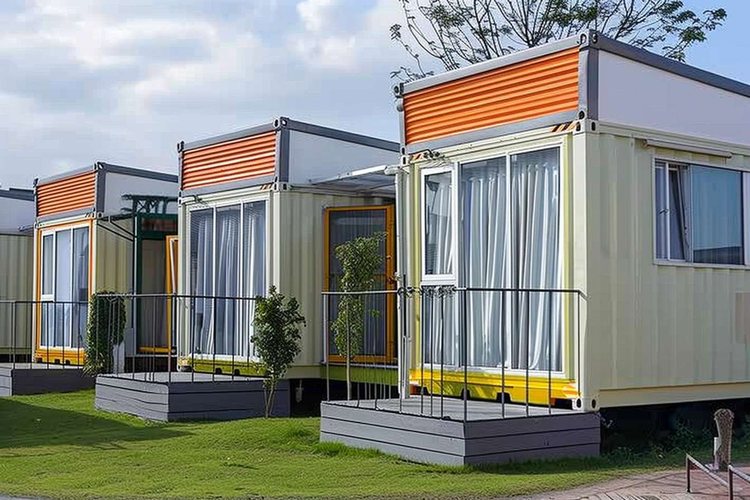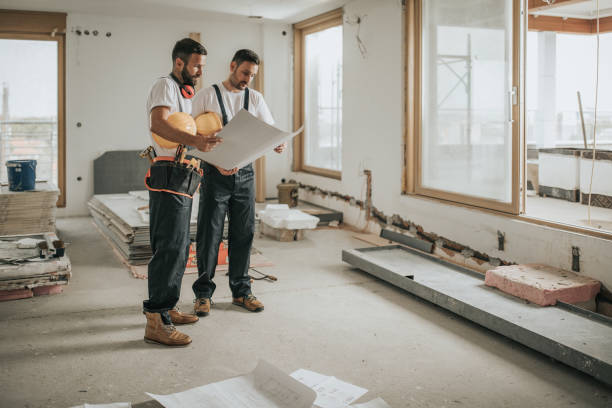Container Homes: A Modern Living Option Worth Exploring
Shipping container homes provide a practical and innovative option for modern living. This article outlines how these homes are constructed, what to consider before choosing this style of housing, and key factors like design, permits, and potential cost benefits. It’s a helpful overview for anyone exploring alternative housing options.

Shipping container homes have emerged as a compelling alternative in the housing landscape, offering innovative solutions to modern living challenges. These structures repurpose steel shipping containers—originally designed for transporting goods across oceans—into functional, stylish living spaces. The concept has gained significant traction in recent years as more people seek sustainable, affordable, and distinctive housing options. From minimalist single-container studios to expansive multi-container estates, these homes represent a creative approach to residential architecture that challenges traditional building paradigms.
What Are the Benefits of Shipping Container Homes?
Shipping container homes offer numerous advantages that make them attractive to prospective homeowners. Their inherent durability stands out immediately—constructed from corten steel designed to withstand harsh ocean conditions, these structures can endure extreme weather events and typically offer excellent security. Sustainability represents another significant benefit, as repurposing shipping containers diverts substantial waste from landfills while reducing the demand for new building materials.
The modularity of container homes provides remarkable design flexibility. Containers can be stacked, joined, or arranged in various configurations to create spaces that match specific needs. This adaptability extends to mobility as well—some container homes maintain a degree of portability, allowing owners to relocate their dwellings if necessary. Additionally, the construction timeline for container homes often proves significantly shorter than traditional building methods, potentially reducing labor costs and allowing for faster occupancy.
How Do Design & Customization Ideas Transform Container Spaces?
The transformation of utilitarian shipping containers into comfortable living spaces relies heavily on thoughtful design and customization. Interior treatments like proper insulation, strategic window placement, and creative wall finishes can completely disguise the industrial origins of these structures. Many designers employ open-concept layouts to maximize the perceived space within the container’s limited dimensions, while others create dramatic multi-level designs by stacking containers in innovative arrangements.
Exterior modifications often focus on expanding usable space through decks, green roofs, or connecting multiple containers. Windows and skylights play a crucial role in bringing natural light into these metal structures, dramatically altering the interior ambiance. Customization options extend to every aspect of container homes—from specialized climate control systems designed for metal structures to space-saving furniture solutions that maximize functionality in compact areas. The constraints of container dimensions have inspired remarkable creativity among architects and designers, resulting in homes that challenge preconceptions about prefabricated housing.
What Does the Step-by-Step Building Process Involve?
The container home building process begins with selecting appropriate containers—considering factors like age, condition, and previous cargo history to avoid potential chemical contamination. Site preparation follows, requiring proper foundation work whether using pier foundations, slab foundations, or basement structures. The modification phase involves cutting openings for doors, windows, and connecting multiple containers, which requires specialized tools and expertise to maintain structural integrity.
Insulation represents a critical step, as metal containers naturally conduct heat and cold efficiently. Various methods exist, including spray foam, panel insulation, or more eco-friendly options like recycled denim or wool. Electrical and plumbing installation requires careful planning to work within the container’s limited wall space, often utilizing specialized techniques different from conventional construction. The finishing stages include interior and exterior cladding, which can range from maintaining the industrial aesthetic to completely transforming the appearance with traditional siding materials. Throughout this process, builders must navigate building codes and regulations that vary significantly by location, as many areas have yet to develop specific guidelines for container construction.
How Does Cost Comparison vs. Traditional Housing Stack Up?
The financial appeal of container homes stems primarily from potential savings in materials and labor compared to conventional construction. While the base cost of a shipping container may seem remarkably low—typically between $1,500 and $6,000 depending on size and condition—the total project cost involves numerous additional expenses. Modifications, insulation, utilities, foundation work, and finishing can significantly increase the final investment. However, even with these additions, many container homes achieve completion at lower price points than comparable traditional homes.
The degree of customization directly impacts cost—simple, minimalist designs maintain affordability, while elaborate architectural statements may exceed traditional building costs. Location factors heavily into the equation as well, affecting everything from container transportation costs to permit requirements and labor rates. The comparative value becomes particularly evident when considering the potential for phased construction, allowing homeowners to expand their container dwellings over time as finances permit.
| Housing Type | Average Cost (Per Sq Ft) | Construction Timeline | Maintenance Requirements |
|---|---|---|---|
| Basic Container Home | $100-$175 | 2-3 months | Low to moderate |
| High-end Container Home | $200-$300 | 4-6 months | Moderate |
| Traditional Stick-Built Home | $150-$250 | 7-12 months | Moderate to high |
| Modular Home | $120-$200 | 3-4 months | Moderate |
Prices, rates, or cost estimates mentioned in this article are based on the latest available information but may change over time. Independent research is advised before making financial decisions.
What Financing & ROI of Container Homes Should You Consider?
Financing container homes presents unique challenges within traditional mortgage frameworks. Many lenders remain unfamiliar with container construction, potentially complicating loan approval processes. Alternative financing options often prove more accessible, including construction loans, personal loans, or manufacturer financing programs specifically designed for alternative housing. Some homeowners choose to self-finance their container projects in phases, reducing the need for substantial upfront capital.
The return on investment for container homes varies significantly based on location, design quality, and market perception. In areas where alternative housing enjoys popularity, well-designed container homes may appreciate similarly to conventional properties. However, resale considerations remain important—while some markets embrace these innovative structures, others may view them as novelties with limited appeal. The long-term durability of properly maintained container homes supports their investment potential, though owners should recognize that the market for such specialized properties may be narrower than for traditional homes.
Container homes represent a fascinating intersection of industrial reuse, architectural innovation, and practical housing solutions. While not suitable for every situation or homeowner, they offer compelling advantages in sustainability, cost efficiency, and design flexibility. As building techniques evolve and acceptance grows, these repurposed structures continue to demonstrate the creative potential of alternative housing approaches. Whether serving as affordable starter homes, vacation retreats, or architectural statements, container homes have established themselves as legitimate contenders in the residential landscape—challenging conventional wisdom about what makes a house a home.




